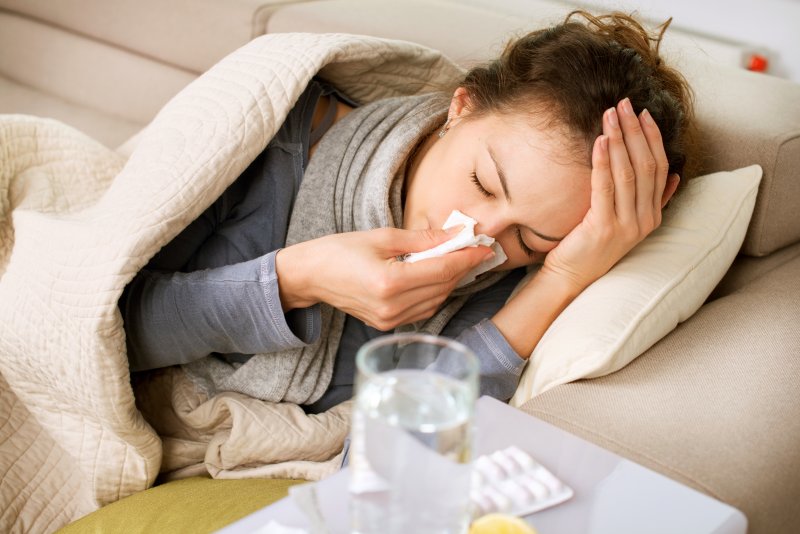
When you attend a dental appointment, even for something as basic as a cleaning, there is a very high risk for the spread of dental aerosols. An aerosol is defined as a suspension of fine solid particles or liquid droplets in air or another gas. This includes substances like mist or fog, but they can also appear every time you sneeze or cough. In the age of COVID-19, it’s more important than ever to learn how aerosols work and what you can expect an emergency dentist in Springfield to do to ensure you don’t get sick just because you need to receive care.
How Aerosols are Produced in the Dental Office
While dental exams do not necessarily produce a large amount of aerosols, dental cleanings absolutely do. Whether hygienists are performing detailed flossing and scaling or the dentist is preparing a tooth to receive a dental crown, saliva and other bodily fluids can splash out of the patient’s mouth and land on surfaces and team members around the operatory.
COVID-19: How Aerosols Play a Major Role
There are many diseases that can be transmitted via aerosols, including the common cold, influenza, sinusitis, pharyngitis, pneumonia, tuberculosis, and severe acute respiratory syndrome. With COVID-19 also being classified as another respiratory disease, this puts dental offices at high risk for spreading the condition.
The good news is dentists have already been performing protocols that work significantly well to reduce the spread of disease, whether it’s during a pandemic or not. In fact, they are going even further to ensure the safety of their patients and team members as a result of COVID-19.
What Emergency Dentists Do to Protect Patients
Dentists always wear a significant amount of PPE (or personal protective equipment) to prevent transmission of germs during dental appointments. This includes surgical masks, gloves, goggles (or other forms of eyewear) and disposable gowns (or gowns that can be thoroughly sanitized before being reused.)
Additionally, dental teams are taking the time to clean the air and waterlines that are used to perform basic treatments like cleanings. Since biofilms can develop over time within the tubing of these dental units, it’s imperative that they are properly sterilized regularly or disposed of and replaced. You may also notice that dentists are improving their ventilation systems to address the removal of aerosols directly and consistently throughout the work day.
Through strict standards like these, emergency dentists can decrease the amount of aerosols in the office in a given time. No matter what your dental needs are, you don’t have to feel like you’re taking a risk just because you’re taking care of your oral health.
About the Author
Dr. Eric L. Tolliver and his team work very hard to keep all patients safe and healthy during their appointments. Whether it’s through advanced chairside suction, face shields, CDC-approved instrument sterilization, or other protocols, harmful aerosols don’t stand a chance in his dental practice. To learn more about the advanced safety precautions his team performs or schedule an appointment, you can contact him through his website.
